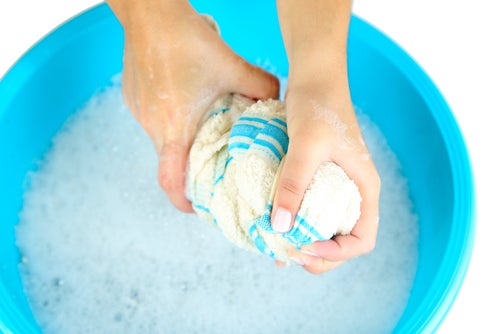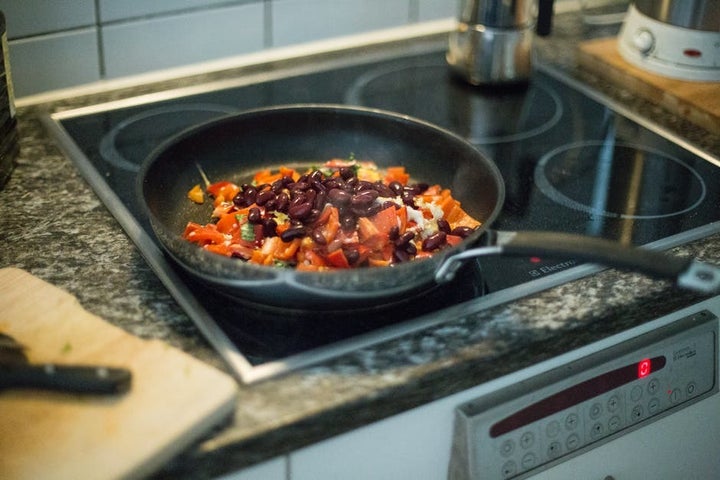Before you start soaking your next batch of beans, I want to talk to you about some of the reasons why you might want to avoid it. There are some pretty surprising, and some pretty shocking reasons why soaking your beans simply does not do the trick. So, let’s get to busting one of the biggest myths you might be holding onto in your kitchen today!
The truth is that you simply do not need to soak your beans. In the past, I might have talked about soaking your beans before using them in order to:
- Make them more digestible
- Make them cook faster
- Make them taste better
- Free them of phytic acid
At one point, these were all reasons why you might want to soak them. Well, I have considered all of these factors when it came to really digging deep and looking into the research. What I found is definitely going to sway your opinion about soaking.
Here are 4 surprising reasons to never soak your beans again:
#1: Preserving Phytic Acid
To me, this is not much of a negative. There is a great deal of data that suggests that phytic acid might just be a strong positive in this sort of conversation. Soaking beans does not make phytic acid disappear, it only reduces it by about 16 - 21%.
Key Insight: There is a lot of data that suggests that phytic acid may be playing a key role in reducing the risk of some of the bigger cancers (1). Breast cancer, ovarian cancer, liver cancer - it can also be corrective against colorectal cancer (2).
There are also some positive data that suggests that those who consume more phytic acid have lower risks for diabetes (3). It is also a good detoxifier against heavy metals, in particular, lead and cadmium.
Overall, the concern surrounding phytic acid has to do with the loss of mineral absorption (4) (or damage to the intestinal tract, ultimately leading to more disease down the road). Population studies, though, have shown that this really is not an issue moving forward. We have seen studies done on zinc status, iron status, and apart from diets that are already deficient, phytic acid does not create more deficiencies in those nutrients.
Bottom Line: Phytic acids do not raise the risk for diseases in human populations, they lower them! When it comes to soaking your beans, I have never really been concerned about phytic acids for your overall health. In any event, they are a welcome bonus to not soaking your beans ever again - for all the good that they can provide to safeguard our health.
#2: Better Taste, and Better Cooking

I always thought that there was probably no harm to sprouting beans, and that they may well aid in better digestion down the road - and that they might just taste better as well. What I found were a few groups who did tests on cooking beans, soaking them and not soaking them. What they found was that the taste and texture were vastly improved when it came to cooking the beans which were not soaked.
#3: Avoiding Gas
The other thought around bean soaking has been around gas and flatulence. There has been a lot of research done on this topic, with different methods and tool uses to keep track of the results. What people have found is that a lot of the gas from beans comes from one of two things:
- Expectation - this is a bit of a self-fulling prophecy. When people think that they have more gas when they eat beans, their bodies will respond accordingly. While it might happen, it is a bit of a false correlation - a bit like the “full moon effect.”
- Raffinose - this three-molecule carbohydrate and your gut flora have a lot to do with what happens when you have flatulence from beans. If your intestinal flora and raffinose have not “met” before, they tend to have something of a party in your stomach. This means that they put out more methane and more hydrogen, and the rest is history. This is a thing that will pass, (ha!) and is not something you have to worry about for more than a week or so when you start introducing more beans into your diet.
Key Insight: From a long-term perspective, having more raffinose in your diet is great for your gut flora. You only get this carbohydrate from beans and legumes, and add to the great variety of fiber that you should already be trying to enjoy (4).
#4: Getting Better Flavor

I recently came across an article about what Epicurious did on soaking beans (5). In it, they uncovered a “quick soak” method that grabbed my attention. This is my favorite, and I would recommend it pretty highly when it came to leaving behind the soaking practices of the past.
They investigated a method where you took your beans, covered them with some water, and bring the pot to a boil. After you reach a boil, you shut off the heat. After letting it sit for about one hour, you would then be free to cook your beans as needed.
As your cooking, and with particular big beans (like pinto beans or garbanzo beans) you may need to add some more water in order to get the intended effect of “quick soaking” your beans to perfection. The quick tip here is that you will always want one inch, or two, of water on top of your beans. The typical duration time of cooking afterward is going to be about one hour and a half. This way, though, you will get the best:
- Taste
- Texture
- Variety of nutrients
- Digestibility
Key Insight: Ever heard of hing? This ingredient can be used in a lot of bean dishes, and is most commonly found in East Indian cuisine. It makes the beans digest incredibly well, and can be a powerful addition to your body. Be on the lookout for it, and introduce it into your diet slowly - just a pinch or two will do the trick, and will improve the flavor and digestibility in a flash.
Stop Soaking Today
Surprised by what you have learned? These are four great, and surprising, reasons why soaking your beans no longer needs to do the trick. If you do anything, you should definitely consider the quick soak method I just described. It is not only going to make your life easier, but it is going to preserve all of the good things that we want from our beans.
I have made it even simpler, here is a quick recipe you can use to quick soak a batch of pinto beans right now! Just follow these super simple steps:
Quick Soak Pinto Beans

Ingredients
- 1 pound dried pinto beans
- Water
Directions
- Cover the pinto beans with at least 2 inches of water.
- Boil, immediately remove from heat.
- Rest; 1 hour.
- Add 1 ½ tsp, kosher salt.
- Boil
- Simmer, add water as needed
Typical Cooking Time: 90 minutes
Soak Less, Learn More
After you have taken what you have learned here today, put that thirst for more knowledge to good use and take the Thyroid Quiz (6). It will equip you with more of the knowledge you need to make the best choices for your health today. Chances are you have already stopped soaking your beans, so why not see how else you can better your life?
Dr. Alan Glen Christianson (Dr. C) is a Naturopathic Endocrinologist and the author of The NY Times bestselling Adrenal Reset Diet.
Dr. C’s gift for figuring out what really works has helped hundreds of thousands of people reverse thyroid disease, lose weight, cure diabetes, and regain energy. Learn more about the surprising story that started his quest.
